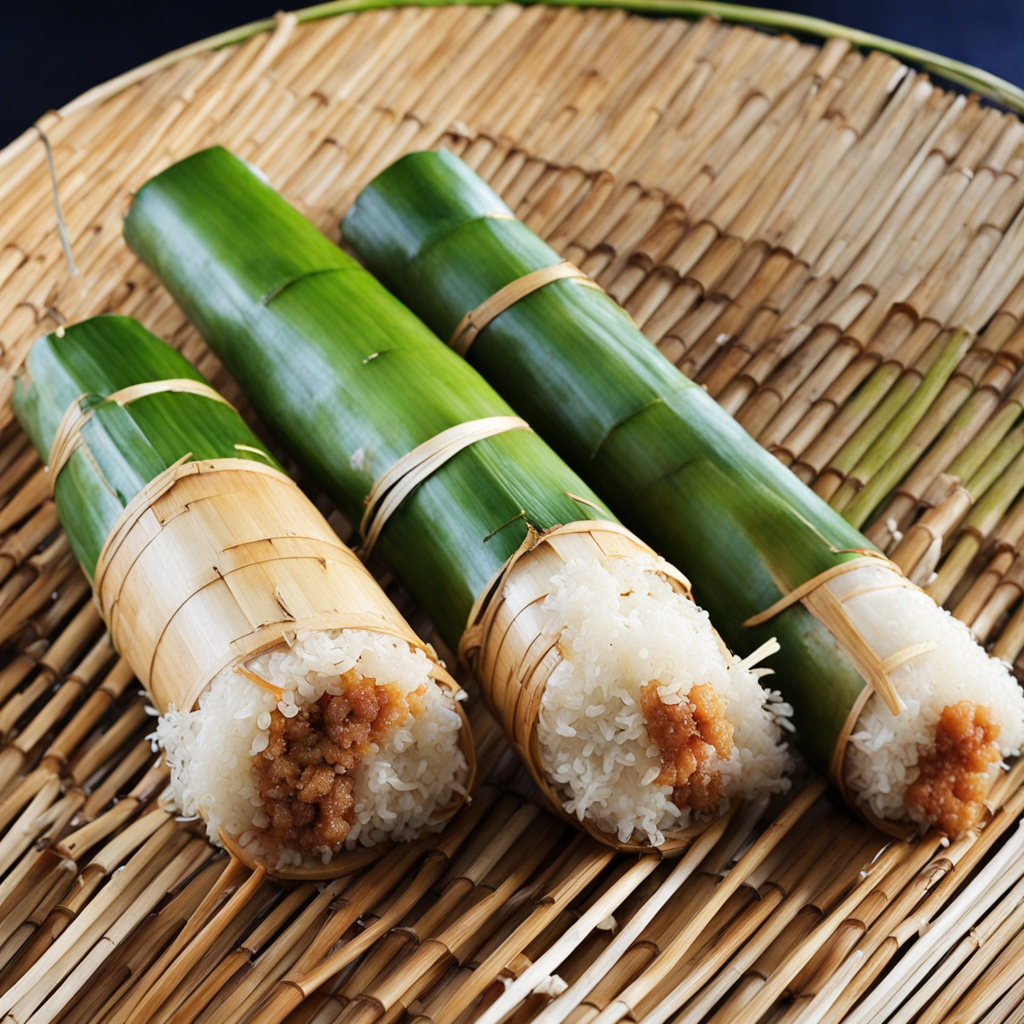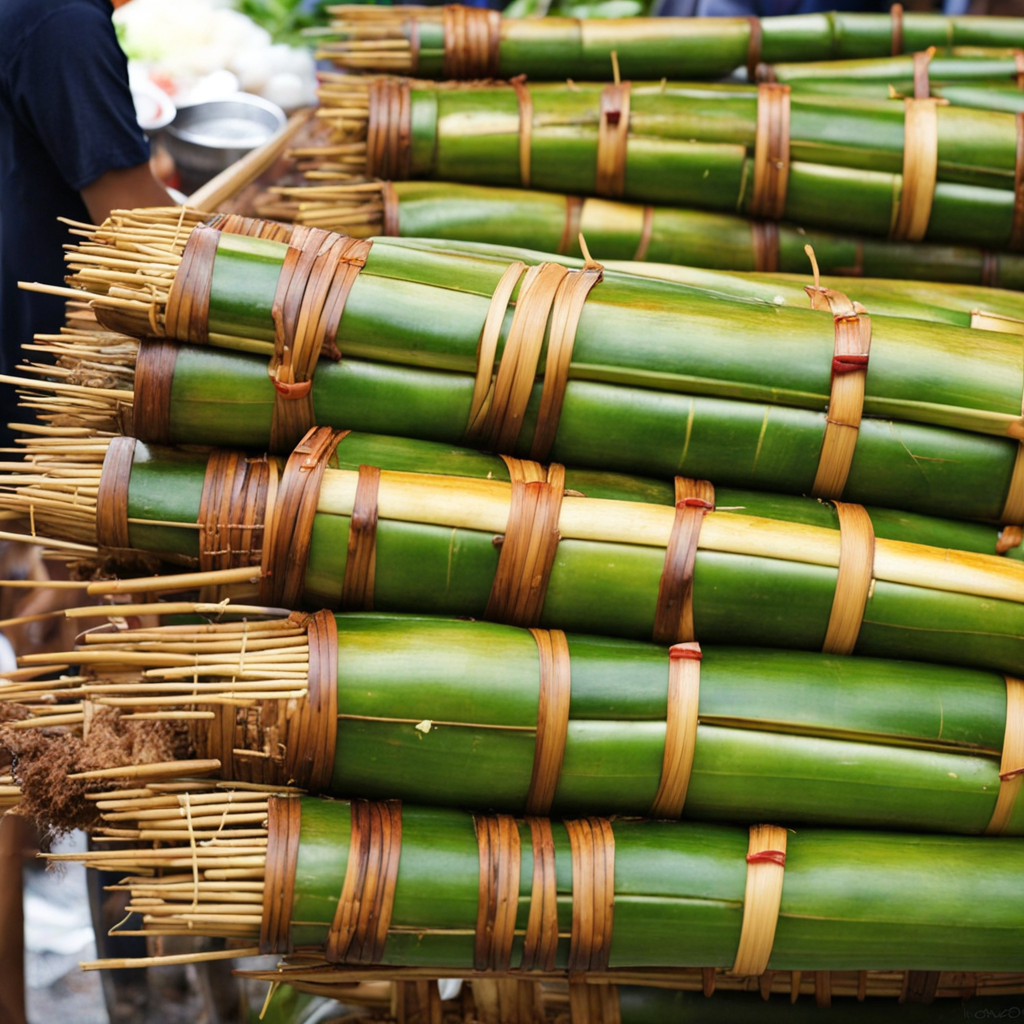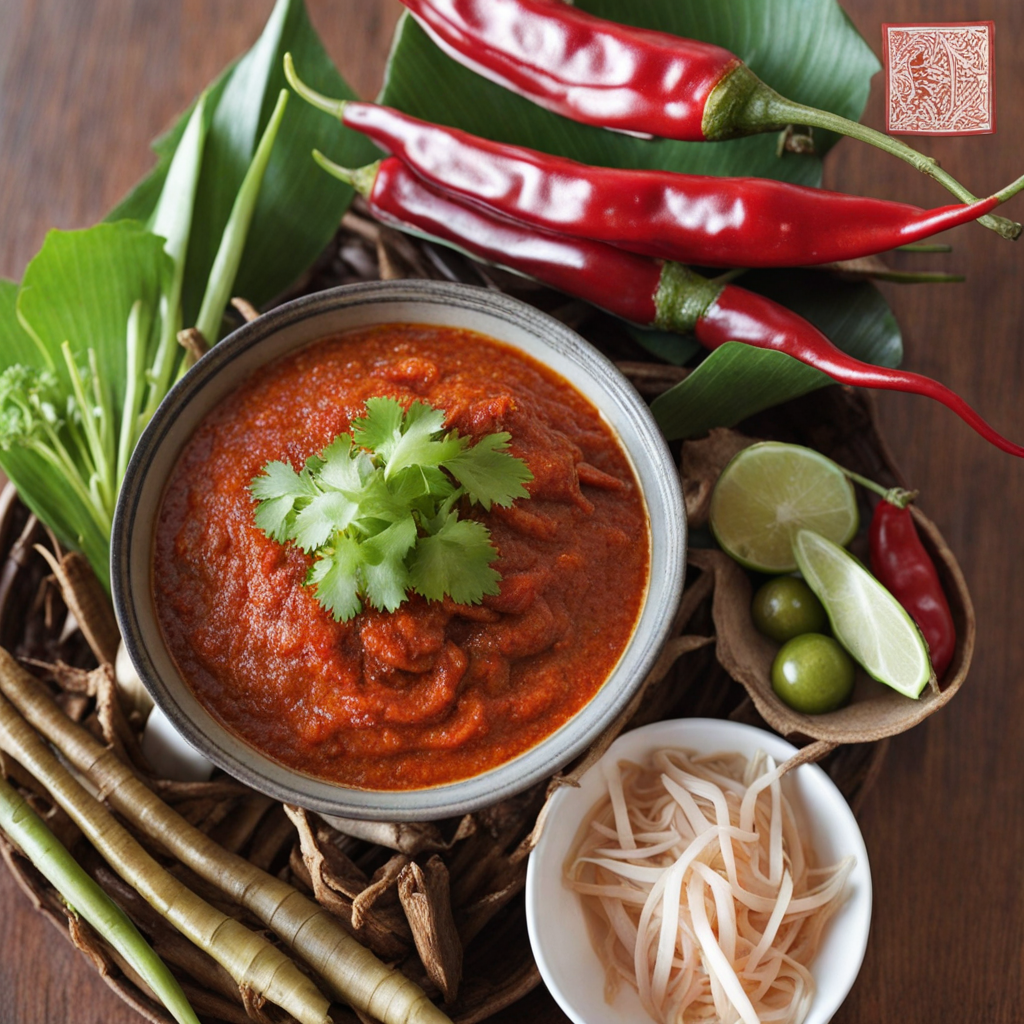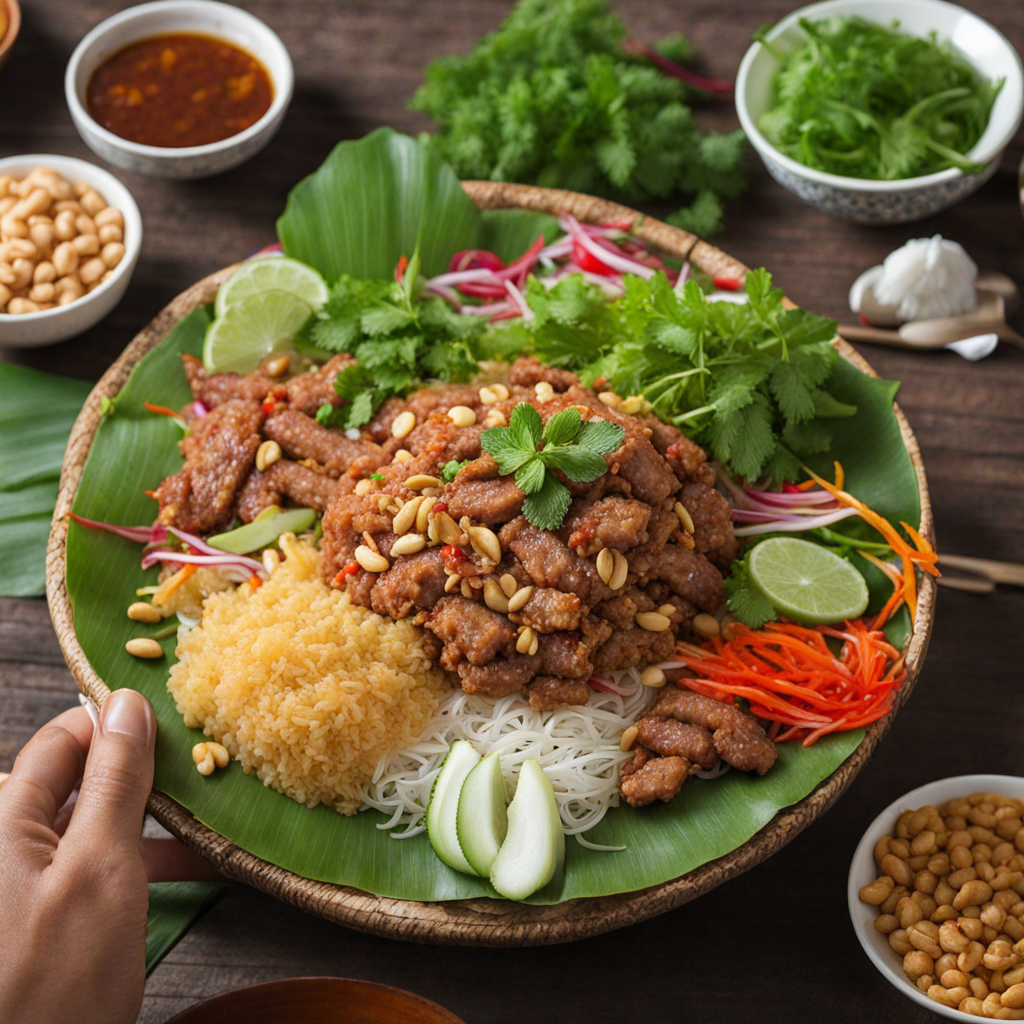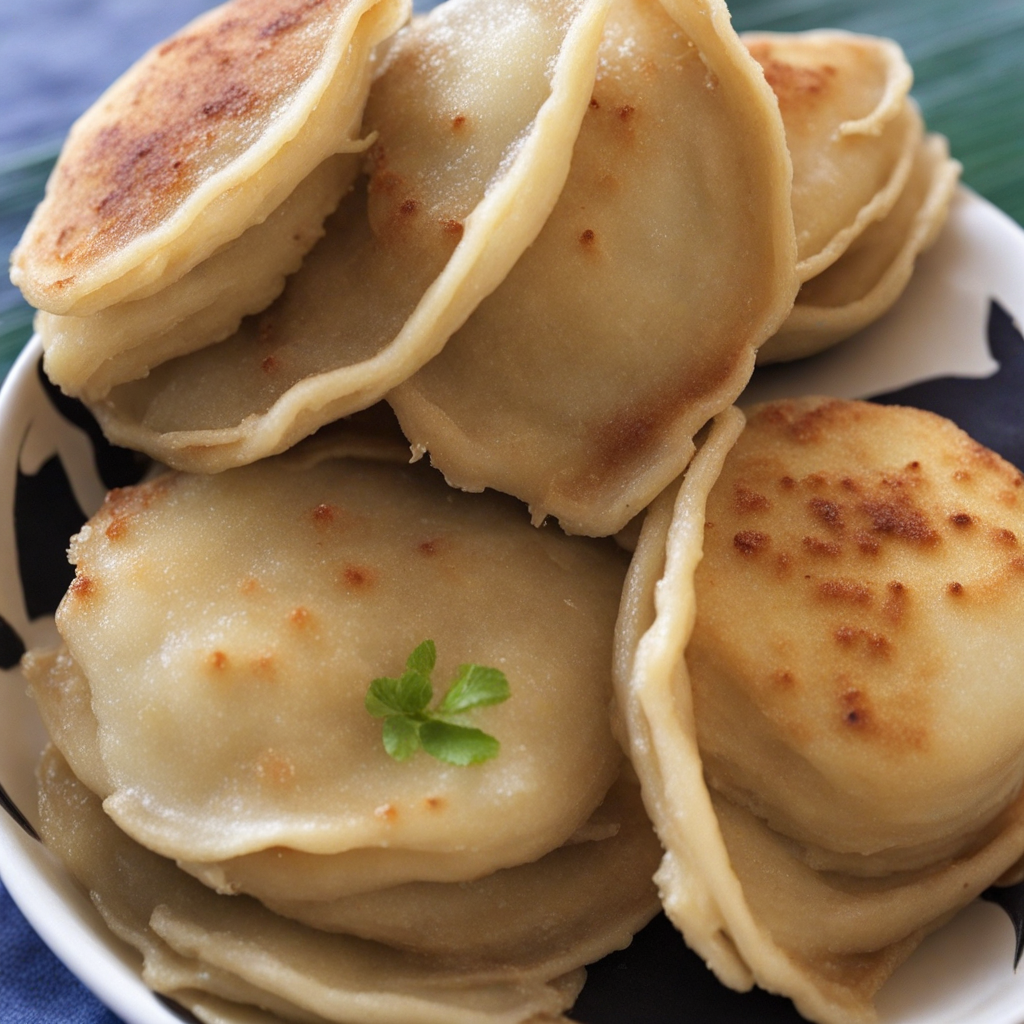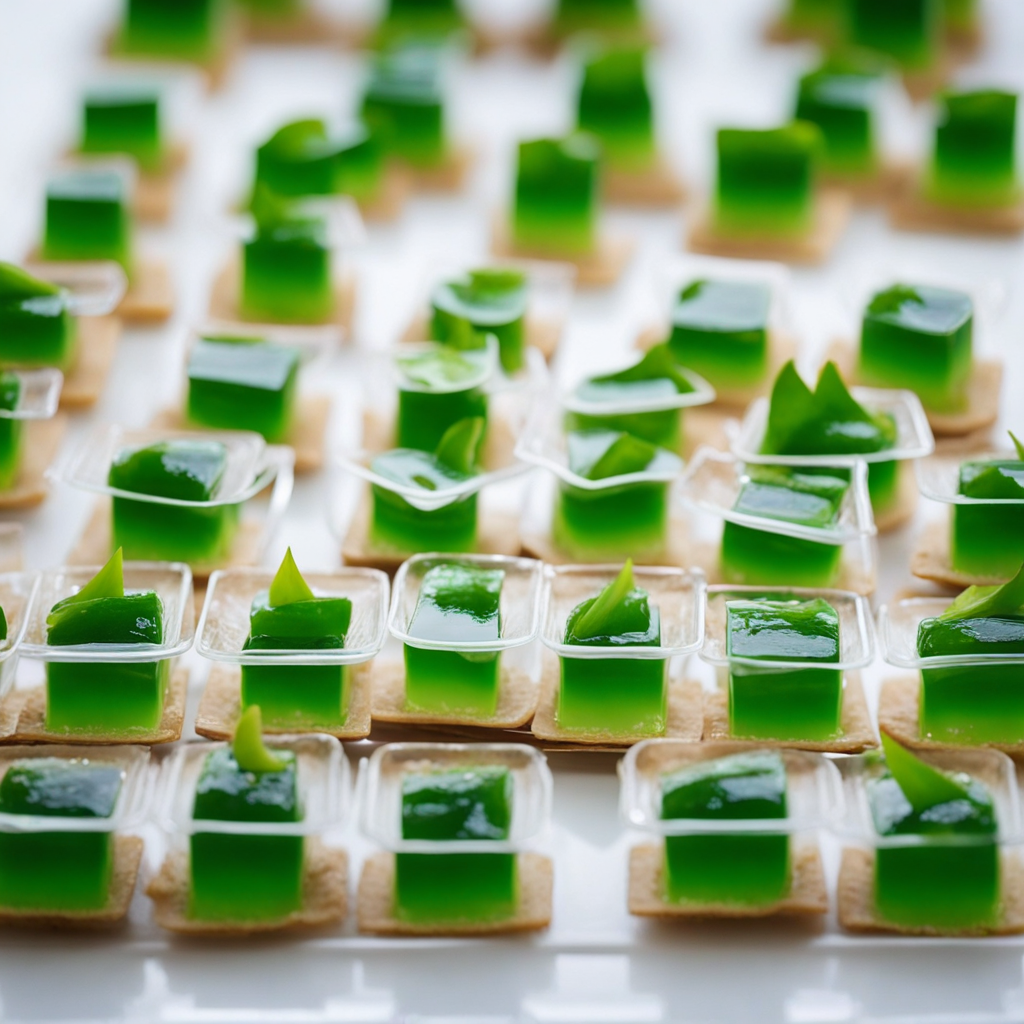Khao Lam
ເຂົ້າຫລາມ, or "khao lam," is a traditional Laotian dish that embodies the rich cultural heritage and culinary practices of Laos. This unique dish consists primarily of sticky rice cooked in bamboo tubes over an open flame, resulting in a delightful combination of flavors and textures. The history of khao lam is deeply rooted in the agricultural practices of the region, where rice has been a staple food for centuries. This dish is often associated with harvest festivals and communal gatherings, symbolizing unity and celebration among families and communities. The preparation of khao lam is a meticulous process that highlights the importance of traditional cooking methods in Laotian culture. The first step involves soaking glutinous rice in water for several hours, allowing it to absorb moisture and achieve the desired sticky consistency. Once the rice is adequately soaked, it is mixed with coconut milk, which imparts a rich flavor and creamy texture. The mixture is then carefully stuffed into hollow bamboo tubes, usually cut to lengths of about 30 to 60 centimeters. The bamboo is essential not only for cooking but also for imparting a subtle smokiness that enhances the overall flavor profile of the dish. After filling the bamboo tubes, they are sealed at one end, typically with a banana leaf or a piece of cloth, to prevent the rice from spilling out during cooking. The tubes are then placed upright in a fire pit or over an open flame, where they are roasted until the
How It Became This Dish
Origin of ເຂົ້າຫລາມ ເຂົ້າຫລາມ, pronounced "khao lam," is a traditional Lao dish that exemplifies the rich agricultural heritage of Laos. Its origins can be traced back to the mountainous regions of northern Laos, where rice is a staple food and an integral part of the local culture. The dish is made from glutinous rice, which is a key variety in Lao cuisine due to its sticky texture and ability to hold flavor well. Traditionally, khao lam is prepared using bamboo tubes, which not only serves as a cooking vessel but also imbues the rice with a subtle, smoky flavor that enhances its overall taste. The practice of cooking rice in bamboo is believed to have been influenced by the indigenous practices of the region, where bamboo is abundant and is used for various purposes, from construction to cooking. The method of preparing khao lam involves soaking glutinous rice, filling it into hollowed-out bamboo tubes, and then roasting them over an open fire. This technique has been passed down through generations, showcasing the ingenuity of the Lao people in utilizing available resources to create delicious food. \n Cultural Significance Khao lam holds a special place in Lao culture, particularly during festivals and celebrations. It is often prepared for significant events, including weddings, religious ceremonies, and the traditional New Year celebration known as “Pi Mai.” The dish symbolizes unity and communal spirit, as it is often made in large quantities and shared among family and friends. In many rural communities, the preparation of khao lam is a communal activity, fostering strong bonds among neighbors and relatives as they come together for the cooking process. Moreover, khao lam is not just food; it carries with it deep cultural meanings and beliefs. The consumption of khao lam during special occasions is believed to bring good fortune and prosperity. Families often prepare this dish as a way to honor their ancestors, incorporating it into rituals and offerings. The act of making khao lam is a ritualistic process that reflects respect for tradition and the agricultural lifestyle that has sustained Lao communities for centuries. \n Development Over Time As Laos has undergone various social and economic changes, the preparation and consumption of khao lam have also evolved. In the past, it was primarily a rural dish, enjoyed by families who lived close to the rice fields and had easy access to bamboo. However, with the modernization of Laos and the migration of many people to urban areas, khao lam has found its place in the cities as well. Today, khao lam can be found in markets and food stalls throughout urban centers, where it is sold alongside other street foods. Vendors have adapted the traditional recipe to cater to modern tastes, sometimes incorporating flavors and ingredients from other cuisines. For instance, some vendors offer khao lam filled with coconut milk, beans, or even fruits, creating a fusion of flavors that attract both locals and tourists. Despite these adaptations, the essence of khao lam remains unchanged. Many still prefer the traditional method of cooking it in bamboo, as it not only provides authenticity but also connects them to their cultural roots. This enduring connection to tradition is a testament to the resilience of Lao culinary practices in the face of globalization and change. \n Khao Lam in Contemporary Cuisine In the contemporary culinary scene, khao lam has garnered attention beyond Laos, particularly among food enthusiasts and chefs who aim to showcase the unique flavors of Southeast Asia. Food festivals and events often feature khao lam, allowing chefs to experiment with its preparation while highlighting its cultural significance. This exposure has led to a growing appreciation for Lao cuisine, encouraging culinary tourism in the region. Additionally, with the rise of social media and food blogging, khao lam has gained popularity as a must-try dish for travelers exploring Laos. The visual appeal of the bamboo tubes filled with glistening rice makes it a perfect candidate for sharing on platforms like Instagram, where food aesthetics play a significant role in attracting followers. This has not only promoted khao lam but has also sparked interest in other traditional Lao dishes, fostering a greater understanding of Lao culinary traditions on the global stage. \n Preservation of Tradition As interest in khao lam grows, there has also been a concerted effort to preserve traditional methods of preparation. Various cultural organizations and local chefs are working to educate younger generations about the importance of khao lam and its role in Lao identity. Initiatives include workshops and cooking classes that teach the traditional techniques of making khao lam, ensuring that this culinary heritage is passed down. In rural areas, elders often share their knowledge of the dish through storytelling, emphasizing the significance of khao lam in their lives. These narratives not only center around the cooking process but also convey morals and values that are integral to Lao culture. The preservation of such traditions is crucial as modernization continues to influence the region, making it vital for younger generations to appreciate and respect their culinary heritage. \n Khao Lam: A Culinary Symbol In summary, ເຂົ້າຫລາມ is more than just a dish; it is a culinary symbol of Laos, encapsulating the country’s agricultural roots, cultural practices, and evolving gastronomy. Its preparation connects people to their heritage, while its modern adaptations reflect the dynamic nature of cuisine in an increasingly globalized world. As khao lam continues to be celebrated both locally and internationally, it serves as a reminder of the importance of preserving culinary traditions while embracing innovation. The story of khao lam is a testament to the enduring power of food to unite communities, celebrate culture, and adapt to changing times.
You may like
Discover local flavors from Laos


